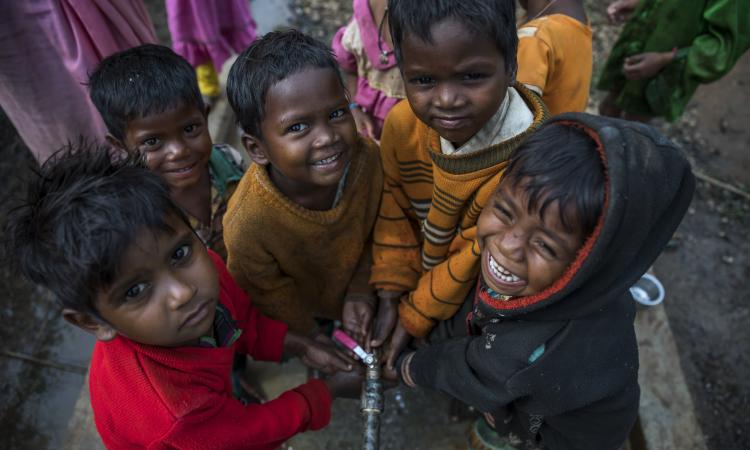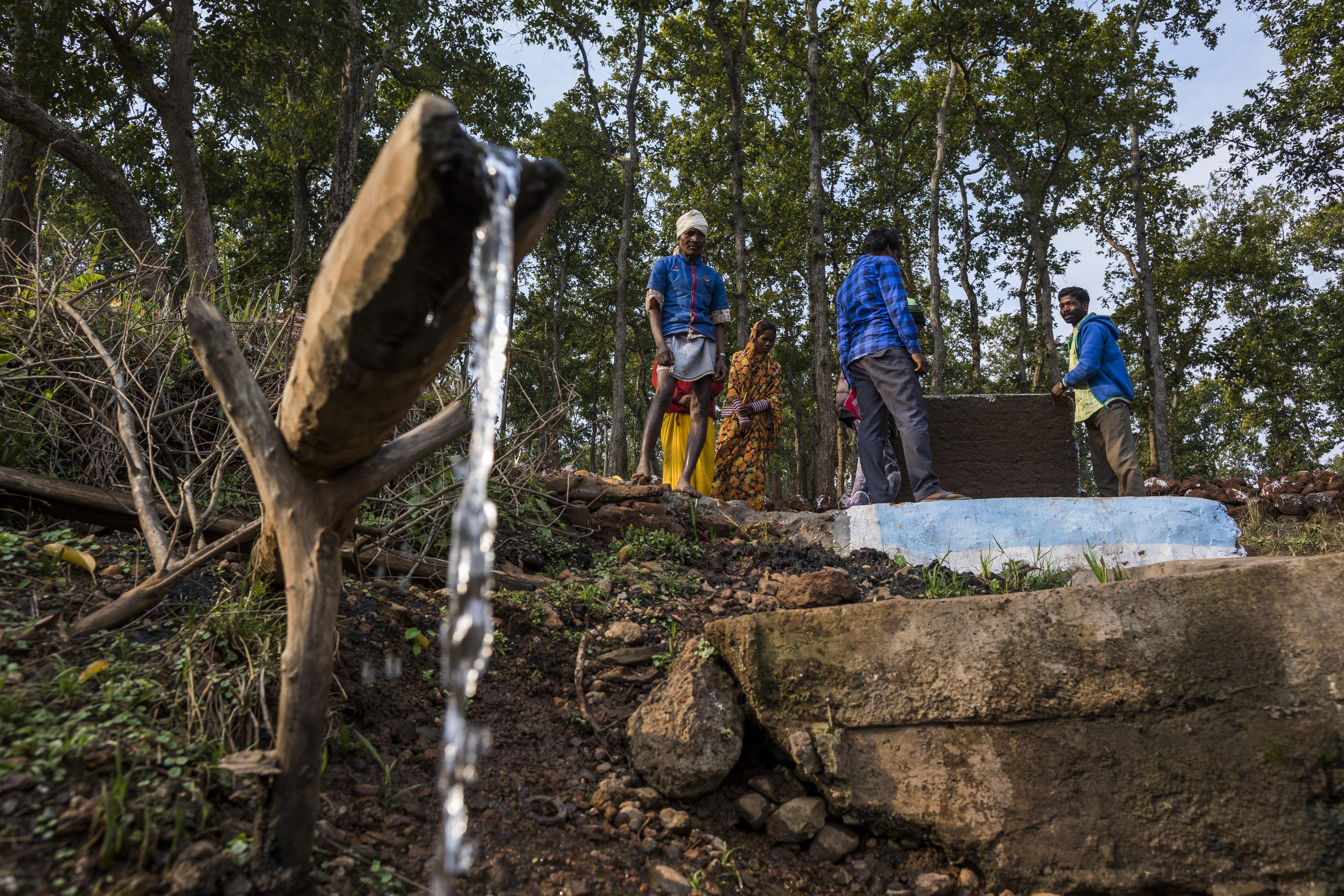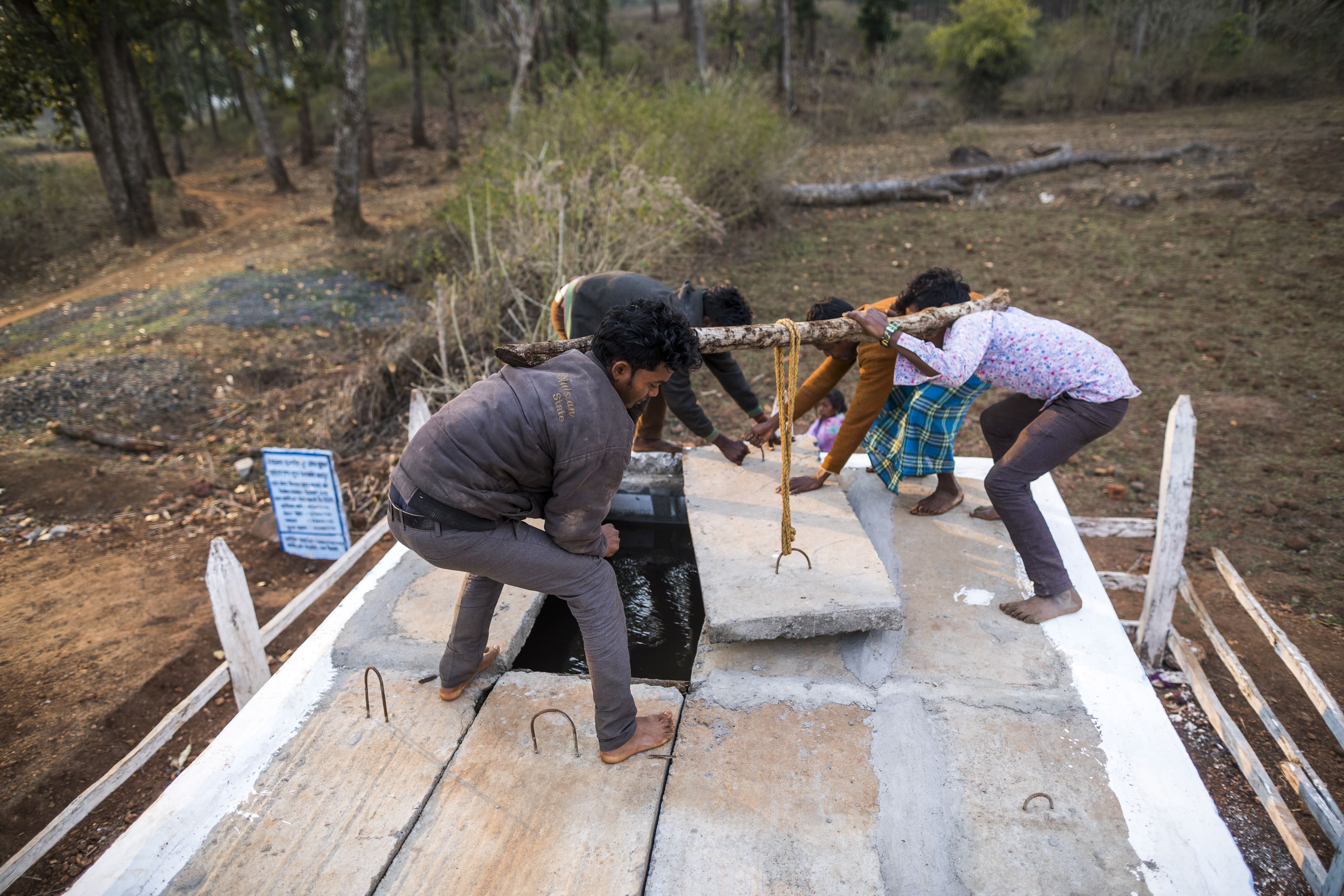
Nested amongst the Satprura hills lies Kapoti, a village in the Dindori district of Madhya Pradesh. This region is known as Baiga Chak and is inhabited by Baigas, a vulnerable tribal group. Following a simple lifestyle, Baigas have been a self-provisioning, self-determining and nearly self-sufficient community residing in the resource rich highland forest regions in small hamlets for generations. The dense forest, its flora and fauna and water are the main sources of sustenance for this community. Rice and millets form their staple diet and they supplement it with seeds, grains, roots, leaves and fruits of numerous wild plants, which abound in the forest.
Across generations, the Baigas have lived in close harmony with nature and relied on natural resources for their sustenance. Protection of nature and natural resources is a way of life and the Baigas take pride in conserving forests, bio-diversity and water resources.
 Things have however, changed in the past few decades. The village elders recall the time when streams flowing in the forests were full of water for most part of the year. Springs, which are a major source of drinking water used to yield freshwater all through the year. Ravnu Singh, an elderly villager recalls how he as a child used to see a number of springs flowing through the village, some of them were even perennial and sufficient to meet the water needs of the villagers. However, all this is changing and they are now grappling to meet the basic requirement of water for its residents. Anthropogenic pressures resulting in loss of forest cover coupled with changes in the micro-climate of the region has impacted the availability of water. Declining water tables and degradation of the catchment have made people vulnerable. The impact of water scarcity has manifested in girls and women spending hours to fetch drinking water, often walking miles to reach the source.
Things have however, changed in the past few decades. The village elders recall the time when streams flowing in the forests were full of water for most part of the year. Springs, which are a major source of drinking water used to yield freshwater all through the year. Ravnu Singh, an elderly villager recalls how he as a child used to see a number of springs flowing through the village, some of them were even perennial and sufficient to meet the water needs of the villagers. However, all this is changing and they are now grappling to meet the basic requirement of water for its residents. Anthropogenic pressures resulting in loss of forest cover coupled with changes in the micro-climate of the region has impacted the availability of water. Declining water tables and degradation of the catchment have made people vulnerable. The impact of water scarcity has manifested in girls and women spending hours to fetch drinking water, often walking miles to reach the source.
Speaking of the time spent in collecting water, Sombati Bai says that the whole exercise of fetching water has not only taken away their valuable time, it has also increased their drudgery and physical pain. She adds that the scenario has led to girls in their village either missing school and at times dropping off from school altogether.
While the scarcity of water remains a problem, residents face a double whammy with contamination of water sources, becoming an issue, especially during the rainy months which impacts the health and wellbeing of the communities. Increased incidences of water borne diseases like diarrhoea, cholera and typhoid further accentuate the problems for the villagers.
While handpumps have been installed by the Public Health Engineering Department, the Baigas prefer springs as their preferred source of drinking water, because they feel it tastes better as compared to water from deep aquifers. However, the approach of protecting and conserving springs and their catchment as a preferred source of drinking water has not found many takers within the government.
In 2017, when WaterAid India began work across 52 villages including Kapoti in 3 blocks of Dindori district in Madhya Pradesh, our approach was to revitalise the springs ensuring year-round availability of drinking water for the Baigas. We realised that the conservation of springs has to be seen as going beyond a drinking water supply programme. It was imperative to link spring shed management with forest conservation, protection of the catchment and community participation.
 Working with communities, gram sabhas, National Institute of Women, Child and Youth Development (NICWYD), a civil society organisation and the district administration, we devised a programme which on one hand worked on repair and renovation and on the other worked on strengthening the local institutions and building awareness on safe handling of water and management of water resources.
Working with communities, gram sabhas, National Institute of Women, Child and Youth Development (NICWYD), a civil society organisation and the district administration, we devised a programme which on one hand worked on repair and renovation and on the other worked on strengthening the local institutions and building awareness on safe handling of water and management of water resources.
Engaging communities in each and every activity was fundamental to our aim of ensuring water security. We constructed a spring chamber - a square-shaped mini pond like structure at the source of the spring to ensure its protection. A pipeline bought water from this chamber to the filter tank. This system works on the simple principle of gravity. Water from this spring chamber is directed into a three-chambered distribution tank where it is filtered using the slow sand filtration technique. Finally, the filtered water is stored in a tank having a capacity of 9,600 liters from where it supplied to individual stand posts placed in front of every household in the village.
While we were excited with our efforts, we realize that we have a bigger task at hand. For villages like Kapoti nestled in the Central Indian Landscape, springshed management is a way to go if we are to ensure drinking water security for the primitive vulnerable tribal groups. Our efforts going forward will be centered around working with the different departments, district administration, local institutions and communities. Also, learnings from Kapoti clearly underscore the importance of springshed management especially in the hilly areas and this could be an important lesson for stakeholders engaged in the implementation of Jal Jeevan Mission.
As Bhagwati Bai fill water in her pots, she has a message for us, ‘conserve our natural resources if we have to sustain our future generations, we owe it to them.
See more pics here.
Amar Prakash is Programme Coordinator at WaterAid India. Email: AmarPrakash@wateraid.org
Disclaimer: The views and opinions expressed in this article are those of the author and do not necessarily reflect the policy or position of India Water Portal.